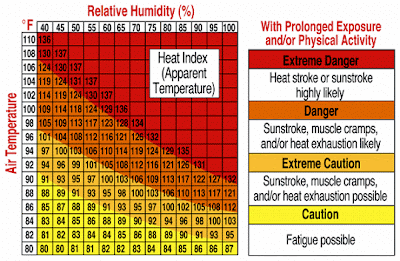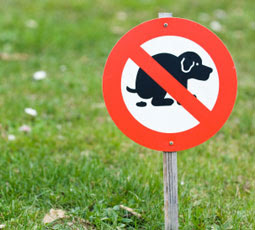 It has been a while since I have written in this blog due to long hours of work and things that tend to get in the way of medical blogging. I have to admit that I have never really written a serious post before... or at least not that I can remember. Writing scientific journal articles, somber patient information columns, or being an associate author on professional medical books are commonplace for me, but I rarely write serious blog posts.
It has been a while since I have written in this blog due to long hours of work and things that tend to get in the way of medical blogging. I have to admit that I have never really written a serious post before... or at least not that I can remember. Writing scientific journal articles, somber patient information columns, or being an associate author on professional medical books are commonplace for me, but I rarely write serious blog posts.Today, I am writing one. Granted, a smidgen of my dry medical humor may find its way in here: I can't help myself, I'm wired that way. (Image taken from http://www.google.com/imgres?imgurl=http://olive-drab.com/gallery/photos/soldier_grief_korea_sm.jpg&imgrefurl=http://olive-drab.com/gallery/description_0113.php&usg=__P9CWq9sxgmUXri7Dsdg9wxXnBMg=&h=288&w=360&sz=28&hl=en&start=34&sig2=SoxMB-VnwSHO_RYIY1XiNQ&zoom=1&tbnid=O2p9ttk41z9J2M:&tbnh=97&tbnw=121&ei=NkBTUZOmAsHXygHB04CICw&prev=/search%3Fq%3Dgrief%26start%3D20%26um%3D1%26hl%3Den%26client%3Dfirefox-a%26sa%3DN%26rls%3Dorg.mozilla:en-US:official%26tbm%3Disch&um=1&itbs=1&sa=X&ved=0CEYQrQMwDTgU)
Over the years, I have spoken with several patient families and patients about their imminent death from their terminal illnesses. In fact, I have given the Death Talk more times than I can count. The "death talk" in doctor speak is that horrible moment when you have to pass on the information to the patient or the patient's family or both that there is noting more that medicine can do. I hate doing that. I really hate it. But apparently, I'm good at it, because a lot of my colleagues over the years have had me do it, even when I was a medical student. One, this is not something that you want to be good at. No one does. So you'll never see a medical student grin and say with enthusiasm, "I want to be the best 'death talk' doctor ever!"
No one wants to tell someone that they are dying. No one wants to tell a parent that their child is dying. No one wants to tell a family that their beloved grandfather has inoperable stage four cancer and there is nothing more you can do.
Yet, it is drastically important, and even more important that it is handled with empathetic hands. I remember when I was interviewing for medical school, that I was asked the question, "What would you do if you had to tell a family their loved one was dying? How would you handle it?"
I had the unfortunate circumstance of being able to tell them that I had already had to do that. My family is quite familiar with death and dying, especially of the young. So I have had much experience prior to entering medical school.
Recently, I stood at the hospital bedside of a relatively young, elderly man whom reminded me of Jolly Old St. Nick. "Has anyone of the attending physicians or other staff told you about your condition?"
(To protect the identities and feelings of the patients I mention here in this blog, I will only paraphrase their words.)
The patient indicated that no one had told him anything and that he had been there in the hospital for two days. That morning was the first time that I met him and I was sent by the main attending to speak with him for the first time. I was the one asked to tell him that he was going to die.
As I explained to him about the results of the scans, how immensely the cancer had spread, and how there was nothing more that we could do for him except arrange for hospice to make him as comfortable as possible, he just watched me with moist eyes. Finally, I asked, "How long have you known?"
He answered that he had the feeling for the last two weeks. He had already been settled to the idea of his impending death before even stepping into the hospital. He had felt healthy for the most part except that he had begun to have a tiny bit of problems swallowing food. (A metastasis tumor had invaded his esophagus.) He had no logical reason at that time to feel that he was dying, except for a warning from his maker.
 There are many times that death comes at us unexpected, but many times people are strangely prepared with the knowledge that they are going to die. This is one of those tender mercies that are given to us from the Lord that help us cope with what's coming ahead.
There are many times that death comes at us unexpected, but many times people are strangely prepared with the knowledge that they are going to die. This is one of those tender mercies that are given to us from the Lord that help us cope with what's coming ahead.Perhaps, I will get tonked by some doomsday preppers that refuse to believe in God or Christ or any supernatural creator, but being in the medical field, seeing the things you see everyday, you know there is a God.
Besides, we have to have a God, because we've got to have someone to blame, right? It's easy to blame God that our loved one has died or that we have an incurable sickness, isn't it? Why didn't He save my father, my brother, my sister, my son, my daughter, my wife, my mother, my friend? And we get angry with God.
We get angry with the doctors. We get angry with each other. Angry with the patient for doing something real or imagined to bring the illness upon themselves. Angry at the system for not providing better care. Angry at the government or the president for not strengthening levies enough to prevent a hurricane from destroying our city or for not warning us fast enough against an earthquake. Or just plain angry at the world.
What about the times we become terribly depressed about losing our loved ones or being told we are terminal and have limited days left? Or we feel entirely emotionally numb and guilt trip ourselves into thinking something is wrong with us, because we don't feel anything. Do we care at all, if we don't feel upset or sad? Are we terrible people because our emotions have shut down?
In the days to come, there will be many disasters ahead of us, whether they are on a personal level or a national level. Whether they are financial or medical, or whether they are a natural disaster or man-made due to some crazy person going on a killing spree. And through out these disasters, we're going to through a series of emotional and mental rollercoasters on top of everything else that we may face. These psychological rollercoasters are better known as the stages of grief.
Another patient of mine complained about being constantly angry. She was a darling elderly lady whom had an adult form of leukemia, which is a cancer of the bone marrow resulting in abnormal production of blood cells. She indicated that she didn't understand why she was so angry at everyone. She was normally a happy and kind person, but now she just wanted to punch someone in the face for anything. With tears in her eyes, she asked me what was wrong with her.
First with a smile, I told her that there were definitely some people that deserved being punched in the face and that if she really wanted to do it, she had my permission. An old lady smackdown was better than pay-per-view.
(Yeah, I know, I shouldn't encourage a frail, elderly patient to pummel people. I'll smack my own wrist. Bad Dr. Princeton, bad.)
But after she stopped laughing, I asked her if anyone had ever explained to her about the stages of grief. When she told me that no one explained to her anything about her situation, I made a mental note to punch a few people in the face myself. Okay, so I never followed up on that, but it was a good thought, considering the fact that she wasn't one of the first patients that no one had explained anything to.
Then I showed her this little video, outlining the stages of grief; showed to to her and her entire family. Yes, a cartoon with a giraffe, that well when you see it you'll be grateful for censorship.
The stage of anger, as shown by the video as being explosive and undirected, is something that has been unleashed on me more times than I can count in the hospital setting by patients and family members. Mixed martial artists have nothing on a doctor who has just given the death talk. It can be pure guerilla warfare: the verbal projectiles are a force to be reckoned with.
So the stages of grief are brought down upon your head WWF pile-driver style and what do you do? You do what any rational adult would do, run screaming for a bug out location, because the end of the world is raining down on you. No, not really. You let them go through the stages of grief, supporting them every step of the way. Because you know that everyone goes through them.
Stages of Grief
Stage 1: Denial
Stage 2: Anger
Stage 3: Bargaining
Stage 4: Depression
Stage 5: Acceptance
The video is a good illustration of these stages, so I will be brief with additional explanations. But I do want to mention that emotional numbness, can occur at any of the stages before the stage of acceptance, but it is most likely to occur around the stage of denial. Some psychologists say that it could be the pre-denial state, others say that it is the post-denial state. I say that it is a sucky state.
Emotional numbness is associated with survivor's guilt in the case of those close to the dying person. Those in this stage are tempted to run away from the dying person or the traumatic event. They tend to label themselves as cowards and they refuse to want to talk about the thing that causes them grief.
When we are dying we may find some of our friends seemingly "abandoning" us. They'll quit calling or coming around. They'll avoid us in places where we would otherwise meet. In fact, they just can't take it. They become emotionally numb and fall prey to the tempting grip of chronic denial. This is very common and a part of the natural process.
Then there are those of us, whom are emotionally numb about the death of a loved one because we love them so much that our minds just can't handle the stress of it all and we temporally shut our emotions down, so that we can appear to be strong for everyone, including the person dying. This also is a common occurrence.
Or we could be facing a mass casualty event or something of disastrous proportions where we go numb in order to process the information quickly and effectively and do our jobs. After it is over we may or may not collapse into a fit or tears or exhaustion. And all of these responses are normal.
At a particular hospital, a man was brought into the trauma bay, looking like a pile of hamburger attached to a head and torso. Motor vehicle accident: diesel verses paraplegic pedestrian in a wheelchair. We did all we could to save him, but he didn't make it. Blood was everywhere, all over the trauma bay floor, the bed, the equipment, and us.
We were all emotionally numb. Seriously, you know when a person is emotionally labile, because their face goes slack and they just stare. We all were zombies. The zombie apocalypse had struck the trauma bay and didn't go away until the attending trauma surgeons engorged themselves on beef stroganoff in furious bouts of emotional eating and the rest of us broke down in stairwells or supplies closets crying.
The stage of anger can produce unwarranted bouts of frustration lashed out at anyone that comes near. This stage can manifest in a form of deep-seated bitterness or outward displays of rage. It can be externally manifest or internally held. When we are in this stage, we find ourselves participating the blame game and saying things that we would never otherwise say to those we love.
Bargaining comes next. Here is the stage where those that aren't religious suddenly start carrying roseries or praying. Where we argue with doctors, offering money or whatever it takes, if they would just continue to try something else even when all available resources and solutions have been exhausted. We bargain with ourselves: we would give up X, if we could receive Y. We would give up our lives instead of our child. "God take me instead of he/she."
Then follows is depression. There is nothing we can do, there is no hope, no recourse, no control... just fear and loss. This stage is horrible. At least with the anger stage we can take it out on something else. At least with the bargaining stage we are doing something or trying something. In this stage, we feel as though we and the world and God have given up on us. These feelings which maybe real to us are not true. This stage is one of the hardest to get over. Because the loss is so evident, even if our loved one is still alive or we have X amount of months still left.
Before I get to the last stage, I do need to mention the fact that we can easily be trapped in any stage for years. A man whom lost his son to poor medical care has been angry for twenty years at God and the hospital. He still is angry. Others can be depressed for years, changing depression from grief to major depressive disorder.
Lastly, after all these emotional trials are over, we should eventually reach the stage of acceptance. This is the stage where true change takes place. This is the stage where the terminally ill take care of all of the things that they wanted to do in their lives. This is where we let go of the emotional pain and suffering, and focus on getting our things in order, making amends, and making arrangements for our survivors to be taken care of, so that there are no regrets. This is the stage where we hold the hand of our dying grandparent, parent, spouse, friend, or child and know that they will physically suffer no longer. We may not have them physically with us, but they will always be around us spiritually, in memories, and/or in our hearts.
The stage of acceptance is the fulfillment of all our emotional trials and fills us with a feeling of peace that doesn't remove mourning but makes sense of it. This is the stage that will save us in the future and give us the strength to move on.
A colleague once said to me, "The number one terminal illness is life; we all die eventually. There is nothing wrong with death, it's just how we cope and deal with it."
Next post, I will continue this discussion in terms of coping with mass casualties and critical incident stress debriefing. May you and your loved ones be blessed in your times of need and be comforted in any sorrows that you may face.

























